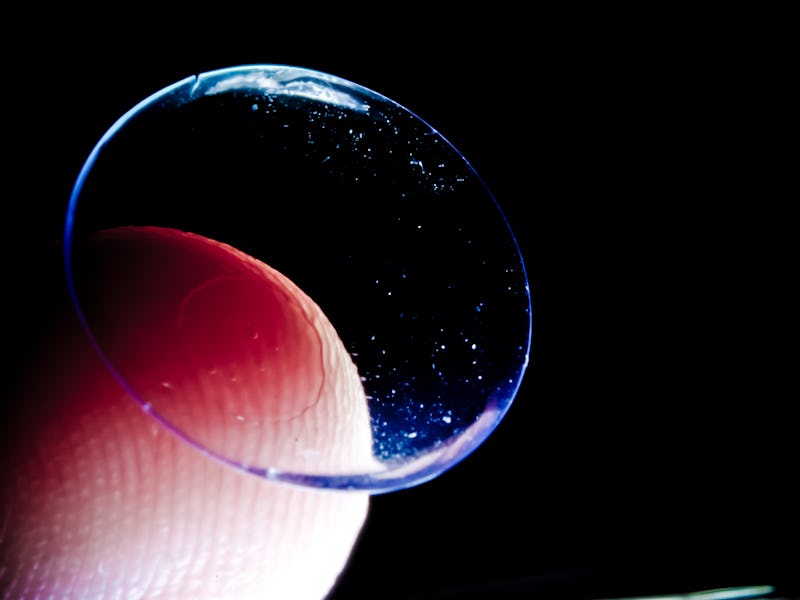Smart Contact Lenses Aim to Bring the Future Direct to Your Eyes
Smart glasses? So passé.

Eyes have famously been called the windows to the soul, but researchers in South Korea are hoping a little nifty technology can also make them the windows to all the rest of our vital data.
A team at the Ulsan National Institute of Science and Technology has tested smart contact lenses that make it possible to track the body’s glucose levels by monitoring the fluids in the wearer’s eyes. Even better, the user would be able to know right away if something is wrong, as an LED light in the lenses would switch off if the levels are too high.
The main focus of the research, reported Wednesday in Science Advances, is on its potential for glucose monitoring without having to draw blood, which would be a huge benefit for the hundreds of millions of people worldwide with diabetes who need to monitor their blood sugar. But the researchers see even wider potential applications.
“This soft, smart contact lens provides a platform for wireless, continuous, and noninvasive monitoring of physiological conditions, as well as the detection of biomarkers associated with ocular and other diseases,” they write in the paper. “In addition, it offers the potential for expanded applicability in other areas, such as smart devices for drug delivery and augmented reality.”
This initial test was just on rabbits, and there’s a long way to go before these researchers or any others working on similar tech can demonstrate that the glucose levels detectable in the eyes are a reliable enough indicator for the rest of the body. This is very much a preliminary step toward something that could have a bigger impact for people later on.
That said, the underlying tech is promising, as it uses nanostructures to build the monitoring and display equipment that both tracks data on the eyes and alerts the user as necessary. All this can then be placed onto a regular soft contact lens.
Overview of the soft, smart contact lens to monitor glucose levels in tears.
“The wearer’s view will not be obstructed because the contact lenses are made of transparent nanomaterials,” the researchers explain. “In addition, these lenses provide superb reliability because they can undergo the mechanical deformations required to fit them into the soft lens without damage. The planar, mesh-like structures of the components of the device and their interconnects enable high stretchability for the curved soft lens with no buckling. In addition, display pixels integrated in the smart contact lens allow access to real-time sensing data to eliminate the need for additional measurement equipment.”
The researchers note a major advance for this tech is the ability to build such contacts without causing too much irritation for the wearer, which is already something that can easily turn would-be contact lens wearers into people who just stick with their trusty glasses. The lens would also be able to collect the needed tears without having to do anything unusual to provoke a reaction in the body, instead just gathering the fluids produced from normal secretion and blinking.
“The integration of this display into the smart lens eliminates the need for additional, bulky measurement equipment,” the researchers add. “This soft, smart contact lens can be transparent, providing a clear view by matching the refractive indices of its locally patterned areas. The resulting soft, smart contact lens provides real-time, wireless operation.”
There’s still a long way to go before you can track your health or even play the latest iteration of Pokemon Go just by slipping in some contacts, but the researchers say there’s “substantial promise” in what they already have. Anyone who feels weird about putting stuff in their eye might want to start gradually getting used to the idea, just in case.